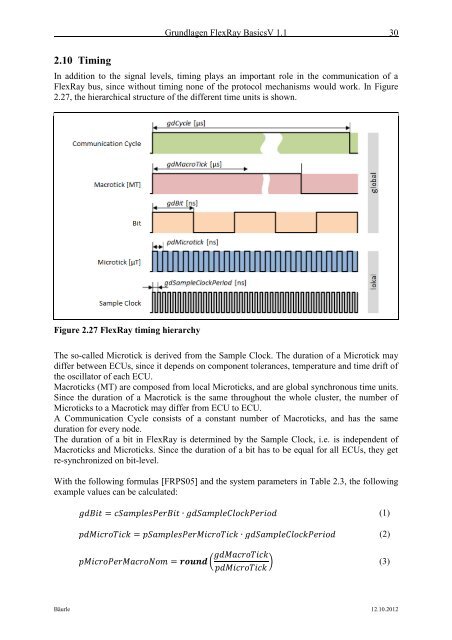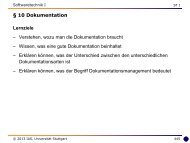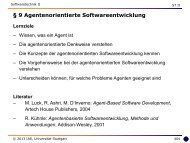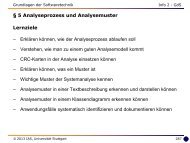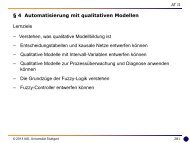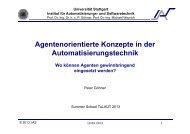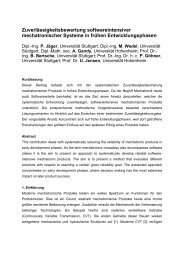Grundlagen FlexRay - Institut für Automatisierungs- und ...
Grundlagen FlexRay - Institut für Automatisierungs- und ...
Grundlagen FlexRay - Institut für Automatisierungs- und ...
You also want an ePaper? Increase the reach of your titles
YUMPU automatically turns print PDFs into web optimized ePapers that Google loves.
<strong>Gr<strong>und</strong>lagen</strong> <strong>FlexRay</strong> BasicsV 1.1 30<br />
2.10 Timing<br />
In addition to the signal levels, timing plays an important role in the communication of a<br />
<strong>FlexRay</strong> bus, since without timing none of the protocol mechanisms would work. In Figure<br />
2.27, the hierarchical structure of the different time units is shown.<br />
Figure 2.27 <strong>FlexRay</strong> timing hierarchy<br />
The so-called Microtick is derived from the Sample Clock. The duration of a Microtick may<br />
differ between ECUs, since it depends on component tolerances, temperature and time drift of<br />
the oscillator of each ECU.<br />
Macroticks (MT) are composed from local Microticks, and are global synchronous time units.<br />
Since the duration of a Macrotick is the same throughout the whole cluster, the number of<br />
Microticks to a Macrotick may differ from ECU to ECU.<br />
A Communication Cycle consists of a constant number of Macroticks, and has the same<br />
duration for every node.<br />
The duration of a bit in <strong>FlexRay</strong> is determined by the Sample Clock, i.e. is independent of<br />
Macroticks and Microticks. Since the duration of a bit has to be equal for all ECUs, they get<br />
re-synchronized on bit-level.<br />
With the following formulas [FRPS05] and the system parameters in Table 2.3, the following<br />
example values can be calculated:<br />
(1)<br />
(2)<br />
( ) (3)<br />
Bäurle 12.10.2012


